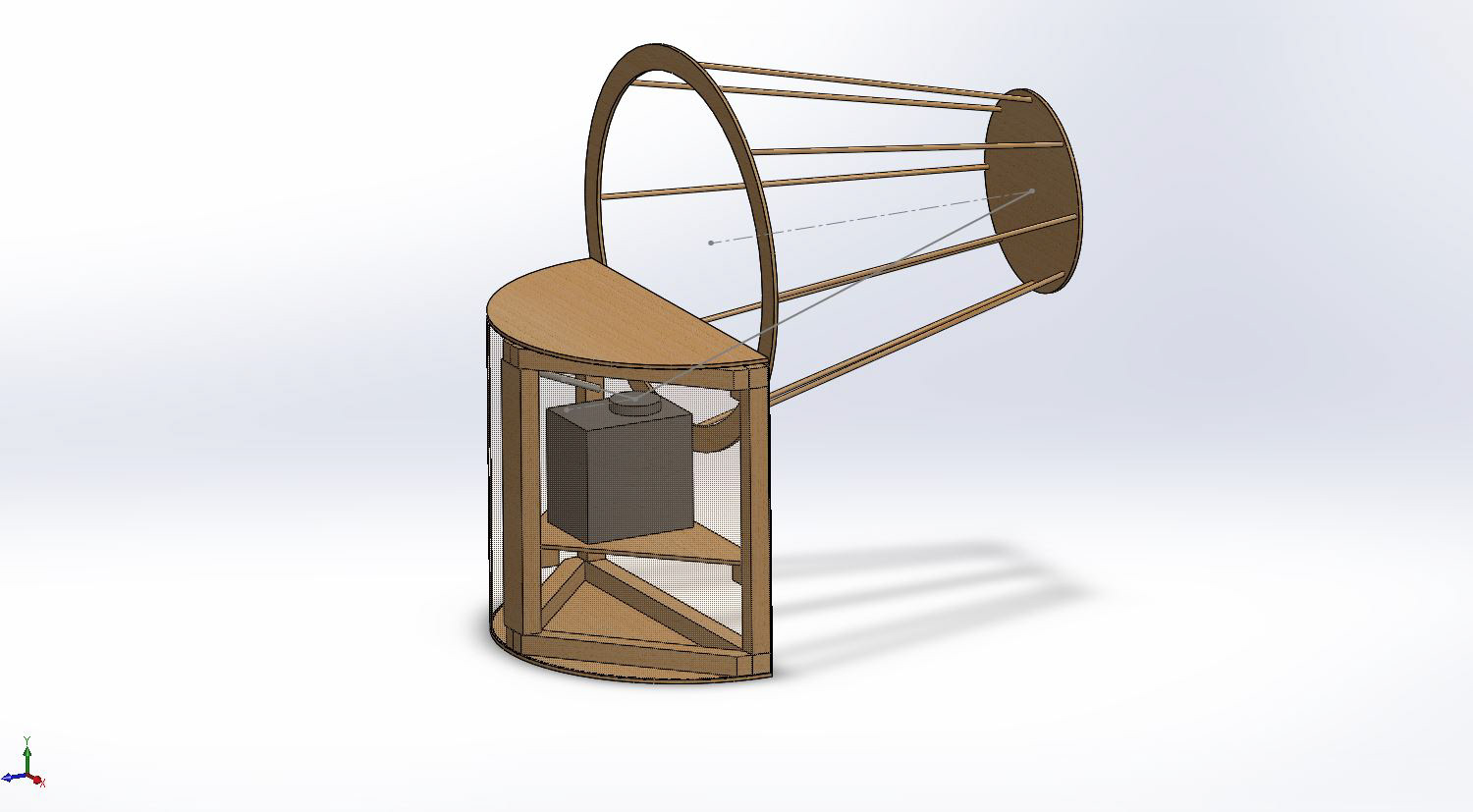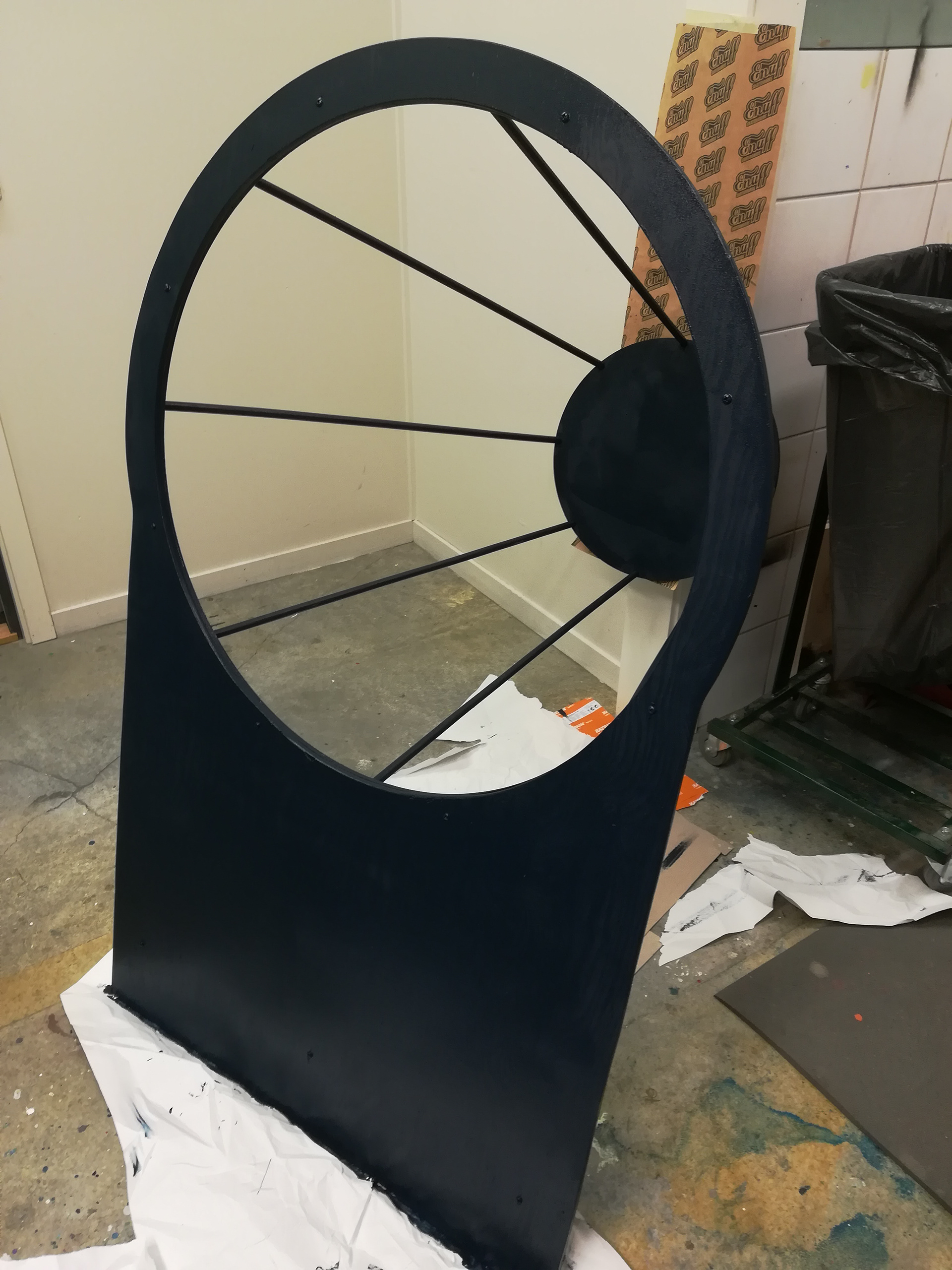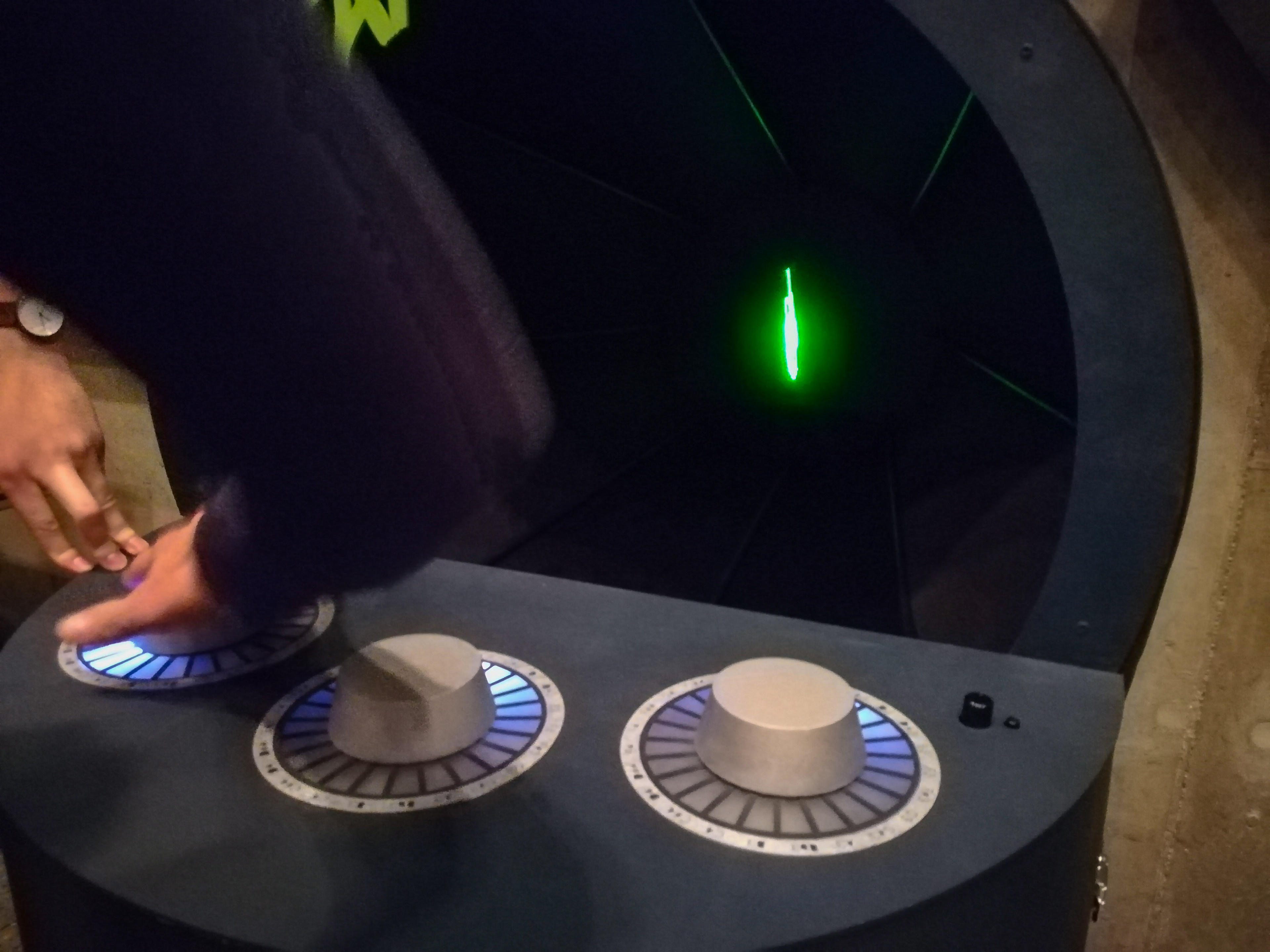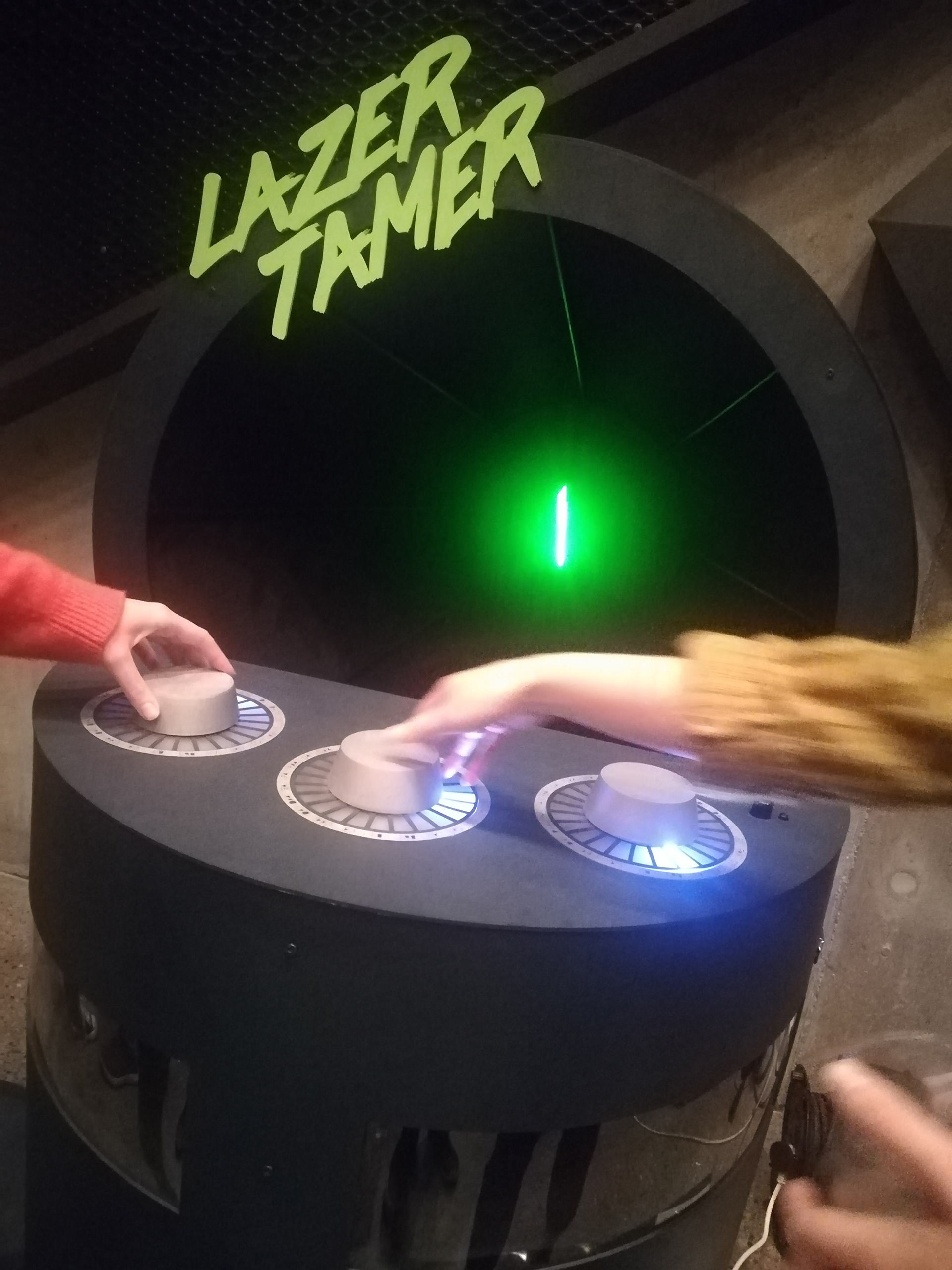The goal of this project was to create an interactive model (with music as the theme) for the Rockheim museum. The target audience was children and youth. The interactive model should arouse curiosity, be fun to use, and teach children about music / sound. The model had to be robust and should be easy to re-start / reset. It was desirable to avoid screen as the main element of interaction.
Participants: Nora K. Bakke, Julie M. Frey, Elise B. Jacobsen, Tobias Wulvik, Andreas Djupvik
Year: 2018





After the first ideation meet, the group concluded that it was desirable to have an interactive play or challenge that more people could collaborate on. Several ideas were discussed, including: note-twister, air guitar with magic gloves, a chair to create sounds with various body parts and visualization of sound waves with ropes. The latter was desirable to continue with, but after evaluating this idea to a more detailed level, we found that it was impossible to achieve the same frequency on the rope as the sound frequency of the tones. the other hand, a new idea appeared: To illustrate sound / notes on sheet music and sliders by rotating on three knobs. We found, however, that this idea would also be somewhat misleading, and therefore we went away from the sheet.


Starting with another prototype after inspiration from videos online, we desired to illustrate the sound image through laser, and adjusted through a user panel with turning knobs. Using sound vibrations from the sound source and "absorbing" it using laser and mirrors, we designed a dancing laser beam on the wall. Initially, we used three tone generators connected to a speaker with a balloon threaded on the front of the speaker element. A mirror was glued on in the center of this surface, with a laser shining on it. When the speaker produced sound, the laser beam bounced back and forward creating a messy pattern. When three specific frequencies (pitches) were played simultaneously in such a way that a major chord was produced, the laser created an ordered and calm (but still moving) pattern. Each turning knob consisted of 369 steps (from 131-500Hz), and where 24 of these steps was chords that could create a major chord. In total, 24 different major chords (“correct” combinations) could be made with the three knobs. The correct combinations were illustrated by green light from a 24 pcs led-ring encircling the knobs. Weak yellow color indicated other possible combinations for major chords, and blue light indicated that the knob was placed in between two frequencies. Sound got produced by a python script on raspberry pi, and a modified sinus curve was played using PyAudio. These frequencies were sent to the Arduino as strings, and new sinus curves was created and played. The rotation sensors and led rings were controlled using Arduino Uno.












After the project was done, the prototype was selected as one of three concepts to be displayed for a while at the entrance of Rockheim museums gallery in the spring of 2018.